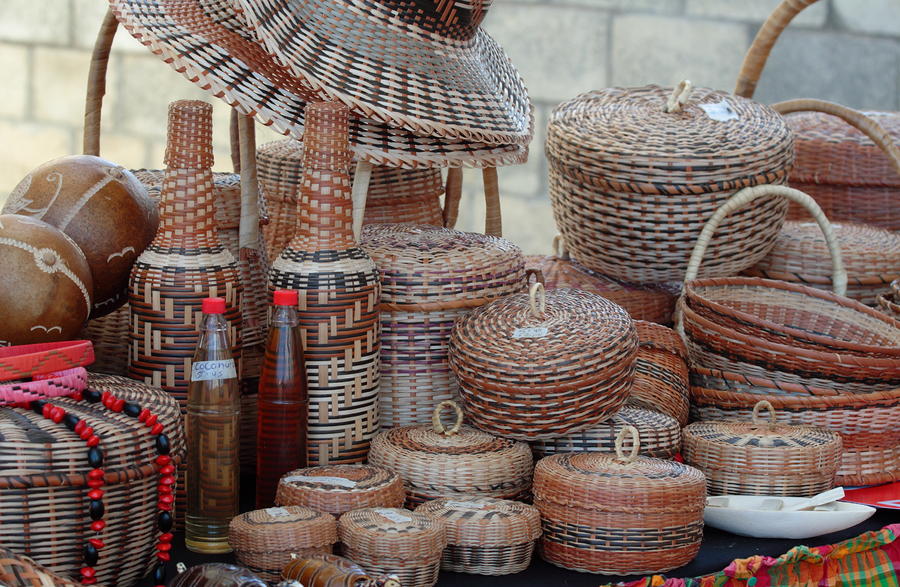The earliest art in Dominica was created by the
native Carib (or Kalinago) peoples.
Clay pottery was very common for many uses, and they were painted with
earth-based natural colors, mostly red, ochre (a yellowish-brown color), white,
brown, and black. These dyes were made from rocks, various plants/flowers,
charcoal, wood, etc. Annatto,
which is often used in food and gives it a dark reddish color, is not only used
in food, but also as body paint as well.
The capital of Dominica is Roseau, which is French
for “reeds.” It’s not hard to
believe that since the French tended to name cities after what they saw in a
place (which are reeds), then basket weaving would also be a craft that was
done in every family. Baskets are
versatile, and they certainly can make work easier. But they’re also an art form.
Carving is also a common art form in native art as
well and can be seen in stone, wood, and bone. Bas-relief carvings can be seen on the sides of large rocks,
which include drawings called petroglyphs.
 |
| By Honychurch -- I love this piece! |
Today, modern forms of art include painting and
sculpture. Like other art of the
Caribbean and Central/South America, Dominican artists tend to use bright
colors in their work. Caribbean landscapes, people, and scenes of everyday life
are universal themes of Dominican paintings.
Mural paintings and public mural art are also seen
throughout the island. Nationalistic themes and scenes depicting a brighter
future and the best parts (or overcoming struggles from the past) can be seen
throughout the island.
 |
| Honychurch at work. |
One artist that I came across who thankfully had
the most information on Dominican art that I found is Lennox Honychurch, a
Dominican artist. There is a lot of information on his website –you can check
out his beautiful paintings and murals. Check it out at www.lennoxhonychurch.com.
Honychurch also wrote a book called “The Dominica
Story” – a comprehensive history of the island. It was originally devised as a
mini-series for radio in the mid-1970s, but it’s been revised many times for
print. It’s available through
Amazon, but the sellers on there want a lot for it: the cheapest one I found was
$99.51. I might put in a request
for my library to purchase it since I see they don’t have it either.
Born in Roseau, Phyllis Shand Allfrey, can trace
her family back to landing in the West Indies in the 1660s. She’s most widely known for her novel The Orchid House (1953), she also worked
as a journalist and editor for two local newspapers. Allfrey was also involved in politics as well – founding the
Dominica Labour Party and was also elected to the West Indies legislature in
1958 (pre-independence days), making her the only women who was elected to
serve in this federation.
Jean Rhys is probably the best-known author to come
from Dominica, and her novel Wide
Sargasso Sea is probably her most acclaimed novel. I have this book listed
in my reading list but haven’t got to it yet. It’s written as a prequel to
Charlotte Brontë’s novel Jane Eyre
(which I absolutely loved!). Rhys
was born in Roseau to her Welsh father and her Creole mother (Creole at that
time was used to refer to white people who were born on the island, whether
they were mixed or not.) When she was 16, her parents sent her to stay with
family in England to be educated there.
Her instructors were constantly frustrated that she would never speak
“proper English” and her accent often left her out on outside and
ridiculed. She was later “coached”
in writing short stories by her friend, English novelist Ford Madox Ford (whose
book The Good Soldier is on my
reading list as well.)
Up next: music and dance



This is very useful
ReplyDelete